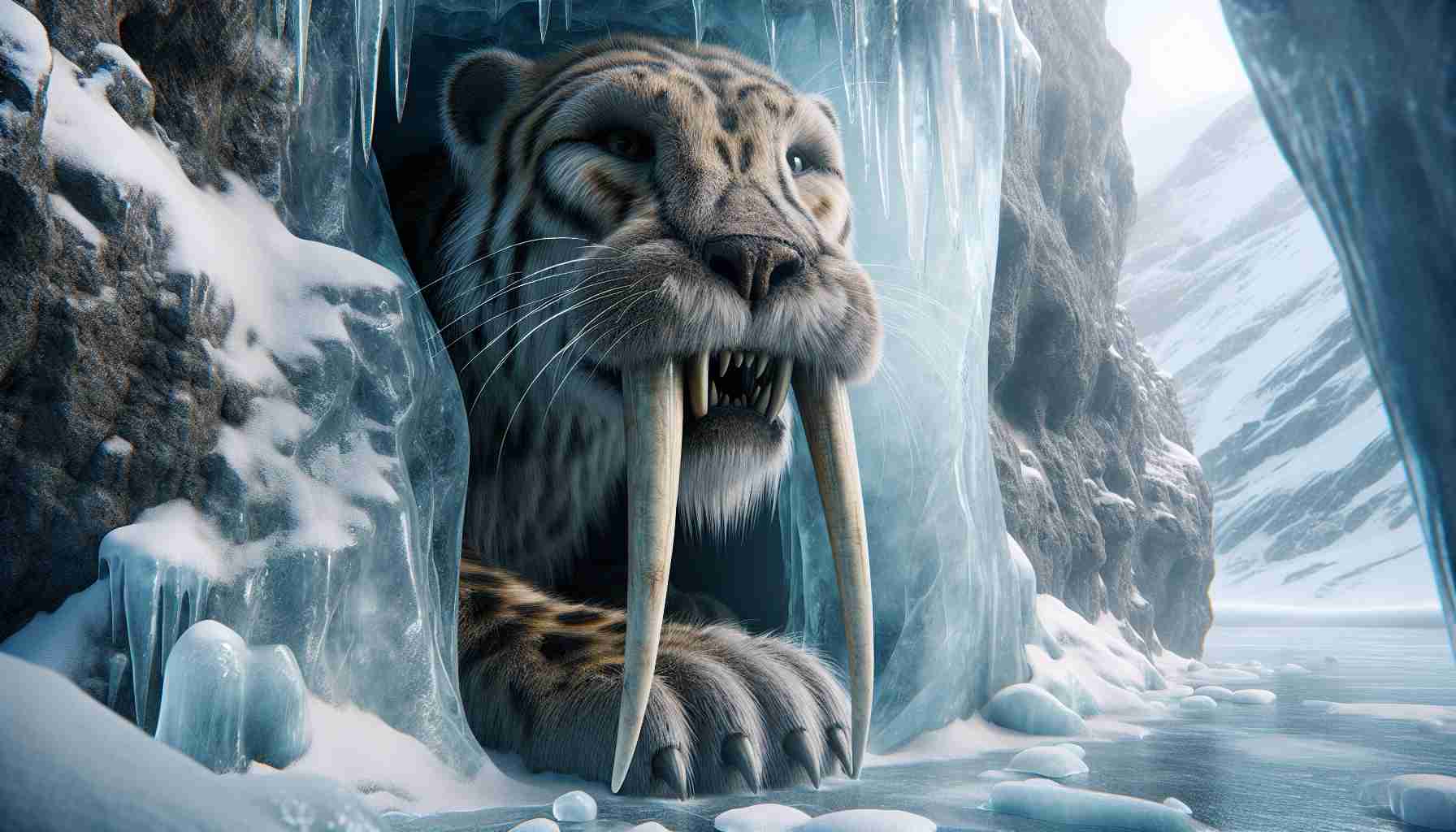A groundbreaking discovery has been made in Siberia—a remarkably preserved frozen mummy of a saber-toothed cat cub has been unearthed near the Badyarikha River in Russia. This specimen belongs to the rare species Homotherium latidens.
A Remarkable Find in Siberian Ice
The young cat remains, astonishingly conserved from head to front torso, emerged from the icy grasp of the Siberian landscape. Portions of its pelvis, femur, and tibia were also found, encased alongside the remains in a block of frost.
The Path to Understanding
This significant find underwent detailed study at Russia’s prestigious Paleontological Institute. For comparative analysis, researchers examined a three-week-old lion cub’s remains from Moscow State University’s Zoological Museum collection. Advanced scanning at Moscow’s Skolkovo Veterinary Hospital allowed for a meticulous study of the mummy’s bone structure, utilizing sophisticated imaging software like RadiAnt DICOM Viewer and 3D Slicer.
Unique Features and Significance
The researchers focused on the intriguing characteristics of the mummy’s skull and teeth for taxonomic classification. The esoteric features revealed a cub with six pairs of ribs, aligning with typical feline anatomy. Intriguingly, the mummy’s bone structure highlighted slight differences from modern lions, like eye placement distortions and ear size variations due to post-mortem changes. Its rich, dark brown fur, paired with distinct jaw and nasal features, helped pinpoint its identity as Homotherium latidens.
This thrilling discovery not only broadens our understanding of this extinct species but also reinforces their presence in late Pleistocene Asia, expanding the knowledge of their extensive distribution.
Frozen Time Capsules: Sabre-Toothed Cub Marks New Advances in Ancient DNA Study
The Role of Sabre-Toothed Cats in Paleontological Advances
The discovery of a well-preserved saber-toothed cat cub in Siberia is attracting significant attention for its potential contributions to the field of paleogenomics, an evolving technology that decodes ancient DNA. This thrilling find holds promise beyond traditional paleontology by offering opportunities to generate insights into the genetics of extinct megafauna. Homotherium latidens, the species to which the cub belongs, is helping scientists unlock genetic mysteries and reveal evolutionary relationships in the animal kingdom.
Implications for Human Understanding and Technology
Unraveling ancient DNA from such preserved specimens is analogous to unearthing a living archive. This approach may pave the way for groundbreaking advancements in fields as diverse as biotechnology and genetic engineering. Furthermore, studying these ancient genomes helps refine bioinformatics techniques, influencing fields ranging from medicine to species conservation.
Fascinating Genetic Insights and Technological Controversies
The potential to reconstruct the genome of an extinct species brings forth moral questions, reminiscent of science fiction scenarios like “de-extinction.” Should we bring extinct species back to life? What ecological niches would they occupy in today’s world? While these types of studies advance our understanding of evolution, critics argue about the ethical and ecological implications of potentially reviving extinct species.
Benefits and Challenges of De-Extinct Species Insight
Advantages:
– Enhancing our understanding of evolutionary biology and climate adaptation.
– Improving conservation strategies through comparative genome analysis.
– Offering educational opportunities, fostering interest in genetics and history.
Disadvantages:
– Ethical dilemmas regarding cloning and de-extinction.
– The ecological impact of reintroducing a species into a changed environment.
– Potential allocation of resources away from protecting critically endangered existing species.
Lesser-Known Facts about Homotherium latidens
Did you know that Homotherium latidens was adapted to endurance hunting, with features distinct from today’s big cats? Their spindly limbs and powerful forelimbs suggest they chased prey over long distances, unlike their lion or tiger relatives. These adaptations provide invaluable data for understanding ancient ecosystems and predator-prey dynamics.
Where Does the Technology Lead Us?
Given the rapid advancement in genome sequencing and paleogenomic methods, we stand at the frontier of potentially limitless archaeological and biological discoveries. These advances could integrate modern scientific knowledge with the natural history of life on Earth, transforming fields like evolutionary biology and ecology.
For those interested in diving deeper into genetic research and evolutionary history, explore these links:
Nature
ScienceDaily
The mystery frozen within the Siberian ice not only enriches our understanding of past life but also inspires visions of humanity’s scientific future.







